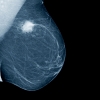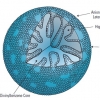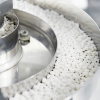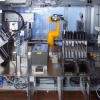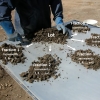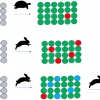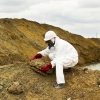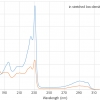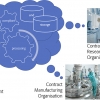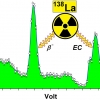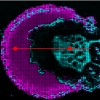This article sets out to demonstrate the accurate determination of elemental impurities, especially As, in vitamin B12 according to USP chapter <233>.
Articles and Columns
Pages
This article reports the use of near infrared (NIR) spectroscopy for the diagnosis of human breast cancer using tissue sections similar to those used by pathologists.
For the separation of ionic species, ion chromatography (IC), a type of liquid chromatography, is the method of choice. The most critical component of this technique is the separation column, which is selected based on factors that include the specific analytes of interest, the sample type and the required detection levels. This article outlines the column parameters that impact the separation of charged species in solution using ion-exchange chromatography and the developments that have continued to redefine what is possible with an IC system.
With a wide range of concentrations of elements in potable waters, their accurate determination is difficult with ICP-MS. It is possible, using a cell-based instrument, to “tune” the signal sensitivity of particular elements and so keep all them within the dynamic range of the instrument.
The ICH Harmonised Guideline for Elemental Impurities of drug products specifies limits on the residual amounts of 24 elements whose toxicities are of concern. The recommended analytical techniques to achieve this are ICP-MS and ICP-AES, but the regulations allow other methods if they exist. One such method is XRF spectrometry. The method is shown to meet the regulations and is a useful, cost-effective alternative to ICP-MS and ICP-AES.
In quantitative analysis, is it better to weigh materials when making up standard solutions or to use volumetric techniques? Traditionally, the answer has been “volume”, however, things may not be as straightforward as they seem. Henk-Jan and colleagues have conducted a new experiment, using robots for both sample preparation and spectroscopic analysis which may provide a definitive answer. Unfortunately, the answer must wait for publication of their paper, but Tony and Henk-Jan’s history of this question makes interesting reading nevertheless.
The sampling of particulate matter is all too often performed without consideration of the importance of representative sampling and the Theory of Sampling. This second part compares grab sampling with composite sampling further illustrating this important issue, and again using the example of contaminated soil which often has a very complex nature.
This work demonstrates the determination of inorganic anions in drinking water by ion chromatography.
Whilst automation is not a panacea, it can improve the accuracy of manual tasks as well as freeing up our time for more challenging tasks. The authors explore some particular examples they have come across and lessons learned from them.
Sampling particulate matter is in many fields performed without a scientific basis, mostly because its critical role is ignored, or at best, misunderstood, and because of an unawareness of, sometimes a disregard for, the Theory of Sampling. This two-part column illustrates this important point using experience in the field of geo-environmental engineering.
The UV/Vis+ Photochemistry Database is a collection of photochemical data and information was started in 1999 and is now an online database updated weekly.
Tony Davies and Mohan Cashyap discuss this topic with help from a number of industry experts. Whilst there are undoubted computing and networking issues for regulated industries in allowing working from home as if the user was in the lab, they are not insurmountable.
Previous Sampling Columns have dominantly focused on the technical issues of representative sampling. This column addresses sampling from the complementary point of view: “What is the economic and commercial impact from non-representative sampling on management decisions and in boardrooms?” We have invited two experienced business consultants to help scope out an outline indicating powerful opportunities for added value and for substantial savings.
It is difficult to provide practical experience with gamma spectroscopy in undergraduate laboratories, and the authors have been investigating alternative sources, and the 138La isotope is a suitable candidate. As well as some background on gamma spectroscopy and radiochemistry, Marco and Valentina also provide some sample exercises that could be used for undergraduate practicals.
David is concerned about the “Importance of citing full details of spectral library and search program” in papers. As he points out, “even when the same mass spectrum is searched against two different versions of the NIST/EPA/NIH EI Mass Spectral Library using the same search program, two different compounds can be found as the first Hit”. There are many possible reasons for this, but the version of the spectral library used and the particular search program used make a difference, and should be included in all references.
A sponsored article demonstrating the ability of the Thermo Scientific™ iCAP™ PRO Series inductively coupled plasma optical emission spectroscopy instrument to determine trace elements and major components in foodstuffs to comply with regulations.
This article describes a recently introduced, rapid, laser-based hyperspectral method for thin-film analysis in the mid-IR fingerprint range.
FT-IR spectroscopy and ED-XRF are used to determine the origin of contaminants in food that may, or may not, have originated from dental materials.
Kim Esbensen outlines questions you should ask before buying any sampling equipment, and points out areas of responsibility.
With a significant proportion of our regular readership probably under home lock-down, we were wondering if we could help you at this difficult time by pointing out some useful online resources. So, when we finally come out of this pandemic, you could do so better skilled and more up-to-date than when we went in to it.


